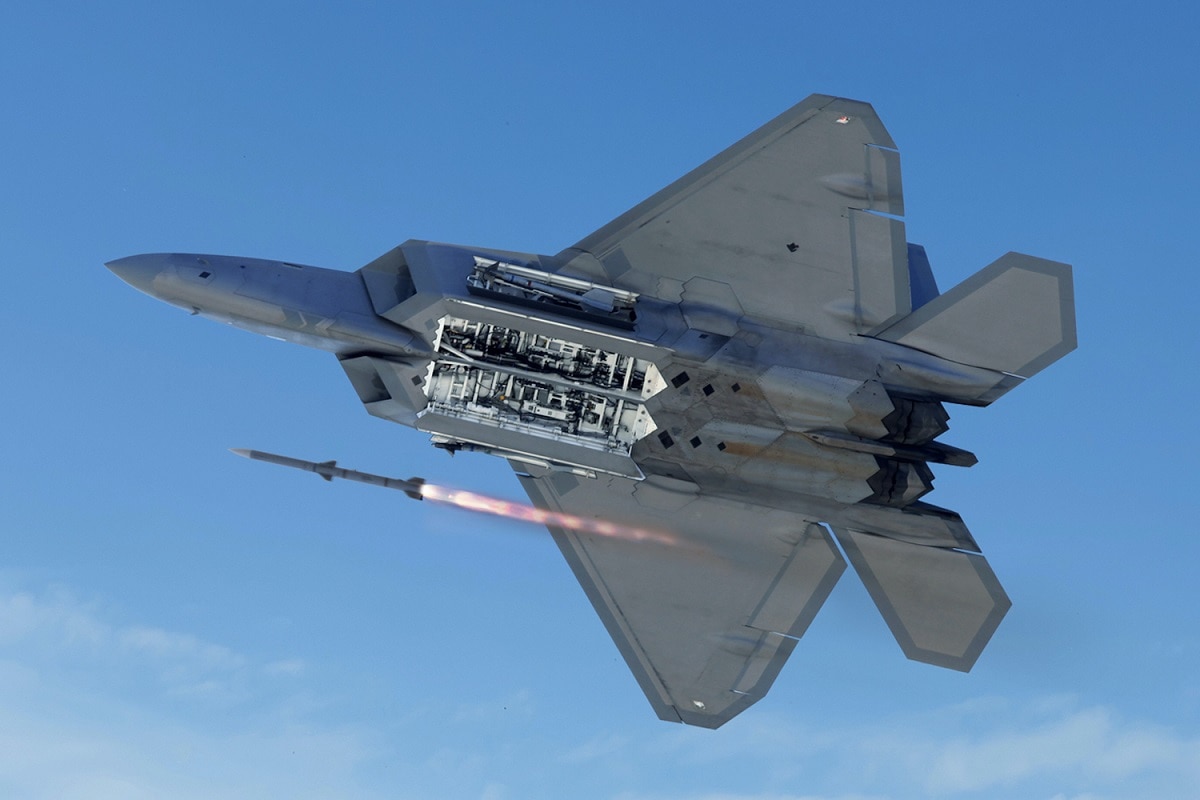F-22 Raptors and Many Other Planes Have Readiness Issues: This new study will get on the Pentagon’s nerves. The U.S. General Accountability Office (GAO) has provided a stinging set of findings that will alarm military personnel in aviation branches and wake up Congress. Simply put, many American airplanes are not ready to fly in a mission-capable fashion. They are likely grounded due to maintenance problems, lack of spare parts, or just general wear and tear. One statistic jumps out from the report. If you take the Air Force’s 186 F-22s in service, only 93 are currently combat effective.
Eight Airplanes Are Not Ready to Meet Their Mission Sets
Titled “Actions Needed to Address Persistent Sustainment Risks,” the report looked at eight Air Force and Navy airplanes, including bombers, fighters, tankers, and reconnaissance aircraft. It devised a metric called “Mission Capable Rates,” which explicated maintenance health and readiness rates for the airplanes. The GAO compared the years 2015 to 2021 and set up a readiness goal in percentage terms for its airplane. “Readiness” means that that the airplane “has a status in which an aircraft type can conduct at least one – and potentially all – of its assigned missions.”
Eight Airplanes Were Given A Bad Report Card
All eight airplanes in the study received less than stellar marks. The readiness goals were not even 100 percent for each airplane. Only the Air Force’s KC-135 had a 100 percent objective for all tankers. In 2021, the KC-135 scored a readiness percentage of 71.1. This was down from 75 percent in 2015. The KC-135 was the most operationally able plane in the study. Alternatively, The B-1B had a 52 percent readiness goal. From 2015 to 2021, its level dropped from 47 percent ready to 40.7 percent.
F-22 Raptor, Navy Tanker and Transport Airplanes Need Work
The Navy’s C-130T had the worst readiness percentage in 2021 at 36.5 percent. The goal was 75 percent. The next worst airplane in terms of readiness was the Navy’s KC-130T which had only a readiness score of 32.4 percent.
The Navy’s F/A-18 E/F had a 51 percent readiness rate compared to the goal of 75 percent. So, two major fighters, the F-22 Raptor and the Super Hornet have subpar readiness scores. The Super Hornet has 530 fighters available at any given time but essentially only about 267 are ready to fly in a mission-capable manner.
Put a Plan in Writing or Else
The GAO report warns that “Neither the Air Force nor the Navy have completed mitigation plans to remedy maintenance challenges, risks, or related impacts identified in any sustainment reviews. As a result, the Air Force and Navy cannot fully address unit-level aviation maintenance challenges affecting aircraft availability required for training and operations.”
Congress Is Finally Getting the Full Picture
This lack of a mitigation plan means that no-one in the Air Force and Navy has sufficiently planned and devised a way in writing to solve this problem. The study was conducted for the U.S. House Armed Services Committee, but the findings assuredly landed at the Senate Armed Services Committee as well.
The GAO says that the Air Force and Navy should be required to offer Congress reports on these findings to solve such an abysmal readiness rate. This reporting should also be explained in Congressional testimony among uniformed and civilian service leadership.
Time to Listen
The GAO left a piercing blow in its conclusion. The investigative body says that it has sounded the alarm by issuing numerous reports on maintenance and readiness for military airplanes over the years. GAO intimates that these studies have fallen on deaf ears, both in Congress and in the Pentagon.
Remedy These Maintenance Challenges
“When sustainment reviews are completed, neither the Air Force nor the Navy has completed mitigation plans, including specific milestones, to remedy maintenance challenges, risks, or related impacts identified in completed sustainment reviews. Without developing mitigation plans, with specific milestones, to remedy maintenance challenges, risks, or related impacts identified in completed sustainment reviews, the Air Force and Navy cannot fully address unit-level aviation maintenance challenges affecting aircraft availability required for training and operations.”
The Air Force and Navy plus Congress need to take this report seriously. The branches are assuredly aware of the problem and are trying to fix it, but a plan is not a plan if it is not in writing. The GAO wants the aviation units to have concrete steps in a manual form that identifies step-by-step instructions to maintain a higher level of readiness. Only then will these airplanes have a chance to take to the skies in confidence that they will accomplish their missions without being grounded.
Now serving as 1945’s Defense and National Security Editor, Brent M. Eastwood, PhD, is the author of Humans, Machines, and Data: Future Trends in Warfare. He is an Emerging Threats expert and former U.S. Army Infantry officer. You can follow him on Twitter @BMEastwood.

